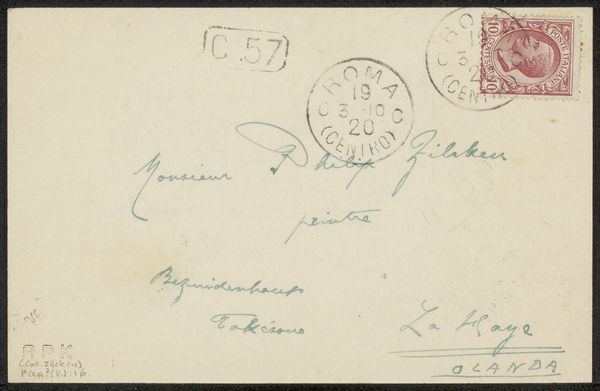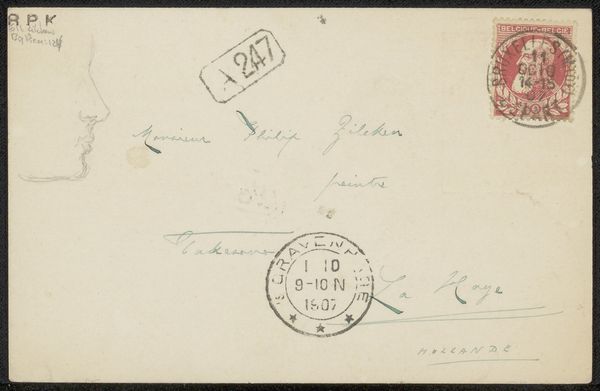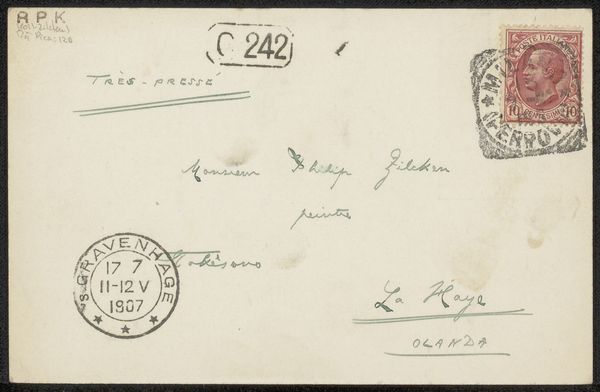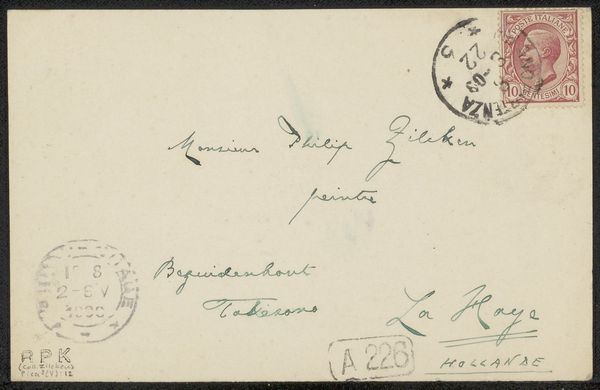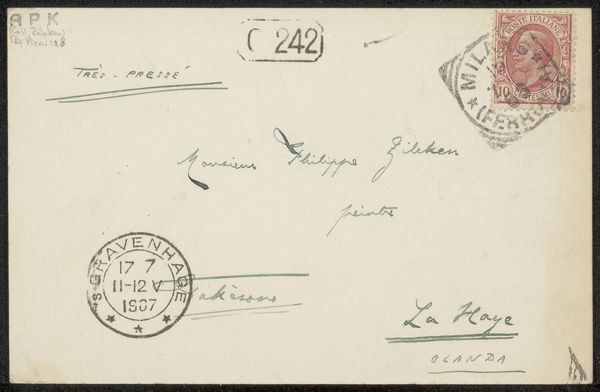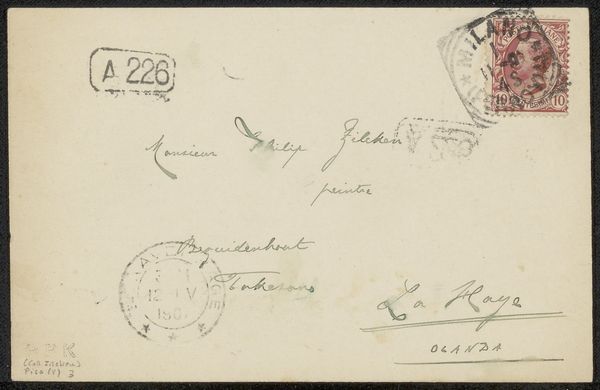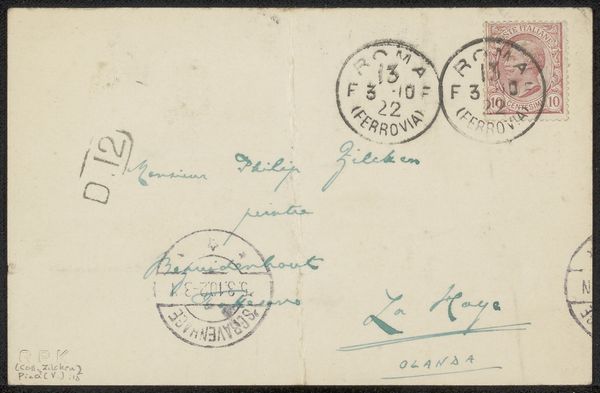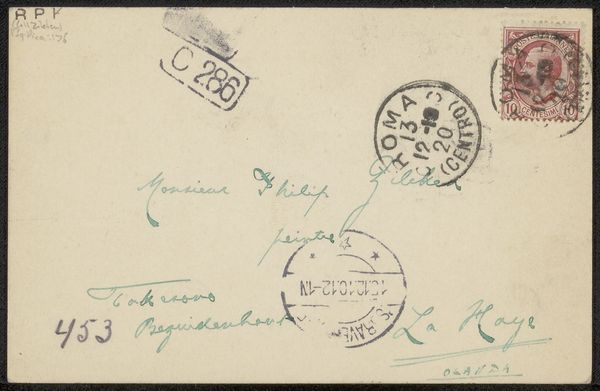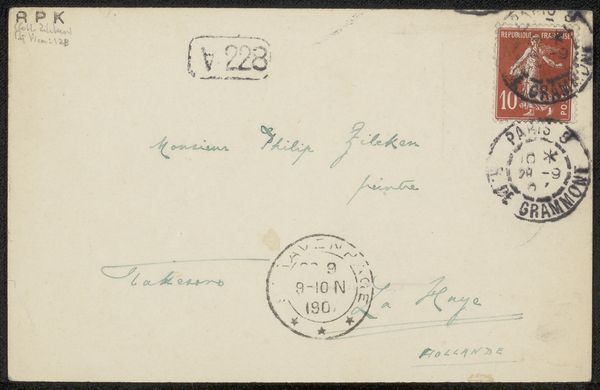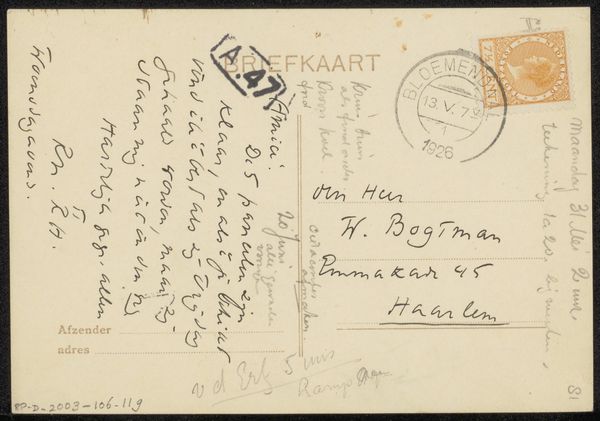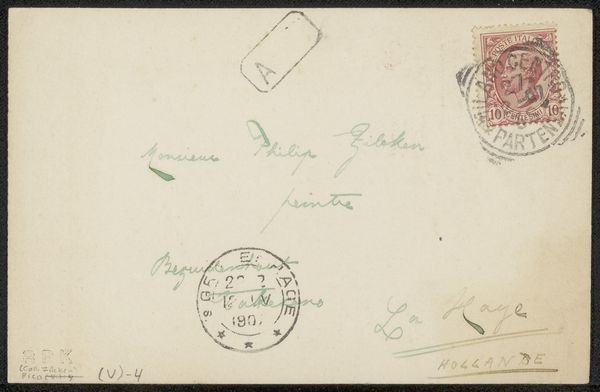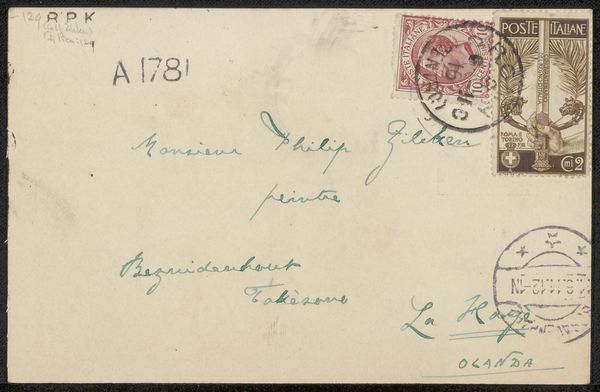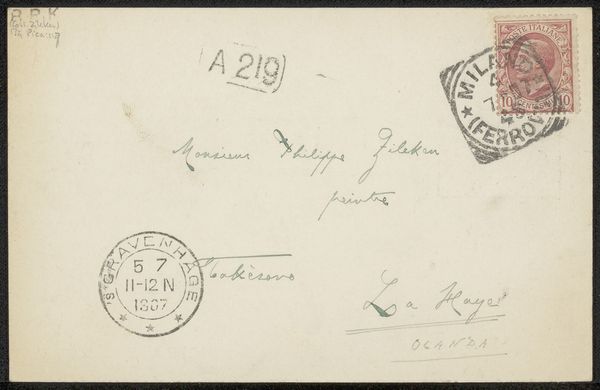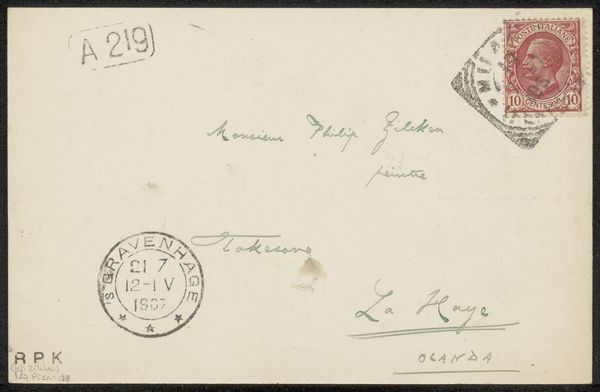
drawing, print, paper, ink
#
drawing
# print
#
paper
#
ink
Copyright: Rijks Museum: Open Domain
Curator: This is "Brief aan Philip Zilcken," a drawing rendered in ink on paper, created sometime between 1909 and 1916, by the Italian art critic Vittorio Pica. What strikes you about it? Editor: I'm immediately drawn to its ephemeral nature. It’s fragile, delicate even. The faint ink, the paper yellowed with age – it whispers stories of bygone eras and forgotten correspondences. It evokes a certain melancholy, doesn't it? Curator: Indeed. Envelopes, especially handwritten ones, are profoundly personal. They carried secrets, intimate thoughts. Think of it: a physical manifestation of a relationship, a moment in time, traveling across space. We can even see "Très-pressé" scribbled at the top, hinting at some urgency. Editor: That urgency, juxtaposed with its delicate presence, is interesting. Considering Pica's role as a critic during a time of great social and political upheaval in Europe, who was Philip Zilcken? Was this missive related to his critical work? Was he in dialogue with him to understand, explain or maybe resist power through art? It could be seen as a tiny act of defiance, this personal touch in a world of increasing mechanization. Curator: I wonder about the censorship of mail during that time too, and how the location in the Hague, Holland hints at ideas of neutrality during war. The address itself even feels poetic—"Bezuidenhout, Laan van Meerdervoort"—evokes such vivid imagery! Editor: Precisely! Each word is laden with context. This seemingly simple envelope unfolds into layers of narratives related to migration, censorship, war, and intimate relationships. A fascinating object that urges us to reflect on how even the smallest forms of communication can reflect larger societal forces. Curator: Yes, a testament to the power held within ordinary objects, sparking profound reflections on the past.
Comments
No comments
Be the first to comment and join the conversation on the ultimate creative platform.
